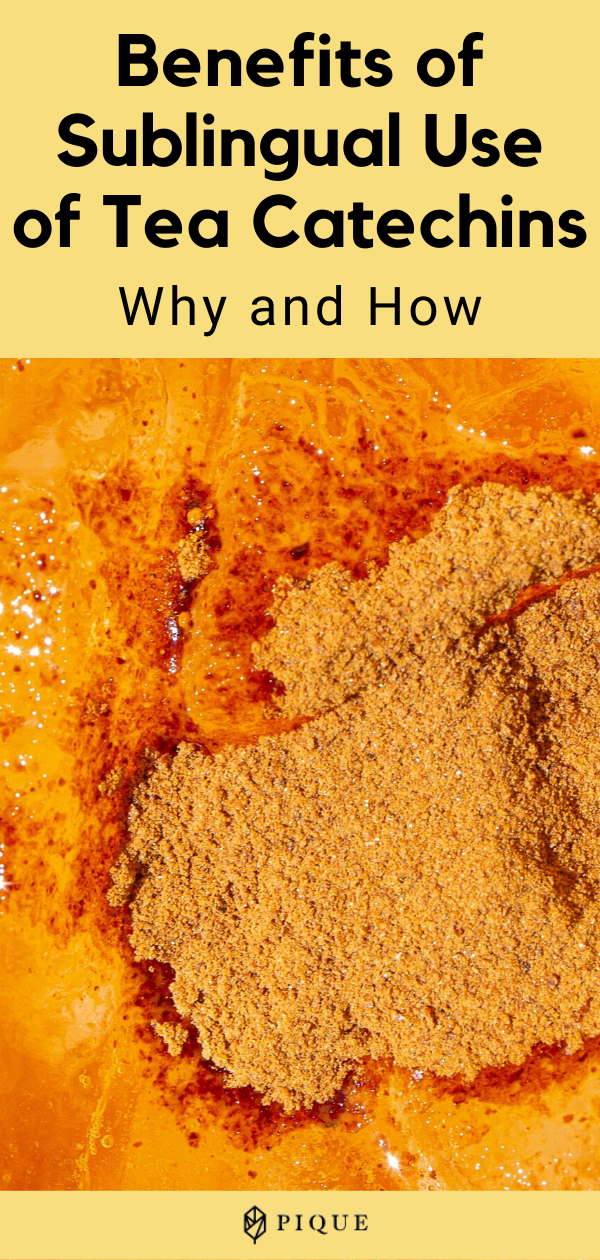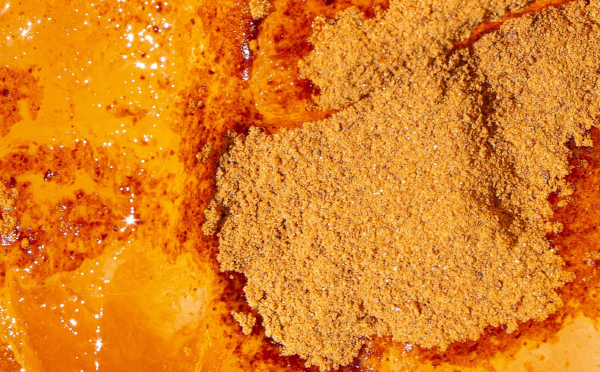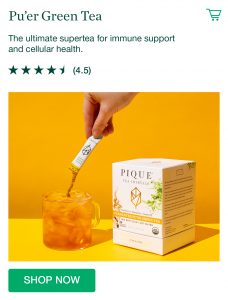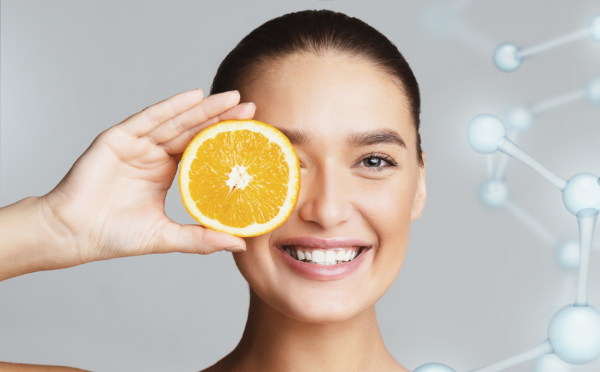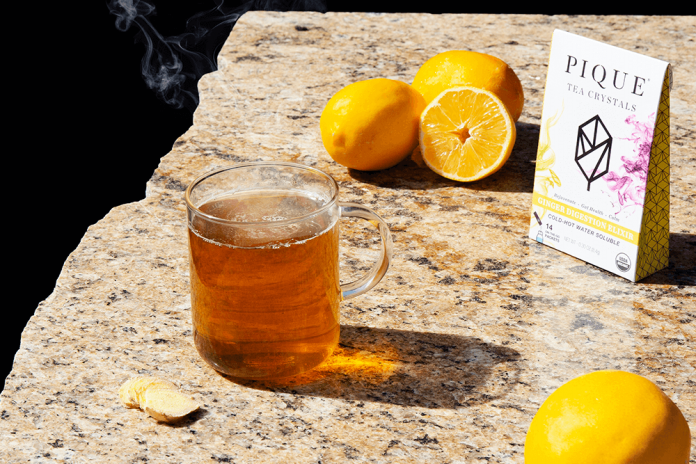Did you know that drinking tea isn’t the only way to consume it?
For all its incomparable proven health benefits, tea drinking is actually not a very efficient way to absorb the polyphenol antioxidants that are responsible for the effects of tea.
To help overcome the relatively low absorption levels, scientists have investigated many alternative dosage forms that might work better. (1)(2)
Most methods are too specialized or expensive to be practical. However, putting Tea Crystals under your tongue could be one way to achieve higher levels of catechins and other beneficial tea compounds.
Before we delve into all the reasons you might want to try taking tea catechins sublingually, though, let’s take a closer look at how sublingual dosing works.
An Introduction to Sublingual Dosing
Sublingual dosing is the technical term for putting a substance under your tongue. In some cases it works better than oral dosing, and also offers other advantages.
The primary reason we can absorb some compounds sublingually is because the surface under our tongues, called the oral mucosa, is much thinner than other mucosal and skin barriers. (3)
Additionally, there are also many small blood vessels in this area, meaning that whatever is absorbed here is also efficiently transported through your bloodstream and into systemic circulation. (3)
Whether or not a given substance absorbs well depends on a variety of factors, including its molecular weight, lipophilicity (affinity for fats), and hydrophilicity (affinity for water). (3)(4)
However, the science of sublingual absorption is far from complete, and sometimes particular substances absorb unexpectedly well due to unknown factors.
Why Sublingual Dosing Might Be Better
From the standpoint of absorption, sublingual delivery offers some distinct advantages over oral administration for the following reasons:
- The sublingual route is faster than the oral route, and may also result in higher peak blood levels (3)
- In some cases, the oral mucosa absorb a higher percentage of the substance than the small intestine (3)
- Stomach acid, digestive enzymes, and the liver first-pass metabolism during digestion can inactivate, destroy, or change compounds (3)
In contrast to oral dosing, compounds you take sublingually are NOT exposed to stomach acid, digestive enzymes, or the liver first-pass effect.
As a result, sublingual dosing is not only faster but often more efficient than taking a substance orally. The scientific term for this is bioavailability, and sublingual dosing sometimes increases bioavailability compared to oral dosing. (5)
Lastly, some people use sublingual dosing in situations where oral dosing is impractical. For example, doctors may give sublingual tablets to patients who have nausea, trouble swallowing, or stomach or intestinal disorders. (3)
Refresher: Tea Catechins and Their Remarkable Health Benefits
All true teas from the Camellia sinensis plant (including white tea, green tea, fermented Pu’er, oolong tea, and black tea), are rich in polyphenol antioxidants.
That said, the type and concentration of polyphenols vary based on the tea subspecies, region, harvest time, and processing. (6) To learn more about the differences between true tea varieties, check out The Ultimate Guide to Different Types of Tea.
Polyphenol antioxidants found in tea include catechins, theaflavins, and thearubigins. And while all true teas contain at least some catechins, white, green, and fermented green Pu’er teas contain the highest levels. (6)
The best-known catechin is EGCG (epigallocatechin gallate), but other major tea catechins include epicatechin (EC), epigallocatechin (EGC), and epicatechin gallate (ECG). (7)
Catechins appear to be responsible for many tea benefits, such as the research findings that tea supports a healthy metabolism, healthy blood sugar levels, healthy cholesterol levels, cellular health, healthy weight management, cardiovascular health, and gut health. (8)
For a more in-depth discussion of catechins and other healthy tea compounds and how they affect your body, you can check out The Science-Backed Health Benefits of Drinking Tea.
What Research Says About Sublingual Green Tea Catechins
Now that we’ve explained sublingual dosing and reviewed the benefits of catechins, let’s examine what the research says about taking tea catechins sublingually.
First of all, surprisingly, there’s no direct study on the absorption of sublingual tea catechins.
The “gold standard” for absorption research would be a human study examining how quickly and how well tea catechins absorb through mucosal membranes after being held under the tongue by measuring plasma catechin levels over time. Unfortunately, no one’s done such a study yet.
In one study, researchers gave participants an EGCG mouthwash every day for seven days, then tested their saliva and plasma levels on the eighth day. (9)
The scientists found EGCG in saliva but not in plasma on the eighth day. As a result, they concluded that EGCG doesn’t absorb through the oral mucosa.
However, because EGCG doesn’t stay systemic indefinitely, that study doesn’t actually prove that catechins don’t absorb through the oral mucosa.
In fact, because catechins disappear from circulation within 24 hours, even if you drank tea every day for a week, there still wouldn’t be any detectable plasma levels of EGCG on the eighth day! (10)
In contrast, a separate study found that EGCG administered to oral mucosa stayed intact and detectable after 15 minutes, but disappeared after 30 minutes. (11) One possible reason for the disappearance is that it was absorbed through the mucosa.
Are the Properties of Green Tea Catechins Favorable for Sublingual Absorption?
Despite the lack of direct research, there’s no reason to assume that sublingual catechin absorption is a scientific dead end.
For one thing, although the benefits of drinking tea are proven, the digestion process makes absorption through the digestive system rather inefficient. Surprisingly, only about 0.1% of all tea catechins you drink absorb during digestion! (12)
According to a 2013 scientific paper, “bioavailability of epigallocatechin gallate is limited by poor [intestinal] absorption and rapid first-pass [liver] metabolism.” (13)
In other words, even if sublingual catechin absorption is inefficient, it need only be slightly less inefficient than digestive absorption to offer a significant advantage over tea drinking.
With that in mind, how do the properties of tea catechins compare to what we know about sublingual absorption in general?
The following properties tend to make for a substance that absorbs well through the sublingual mucosa:
- A molecular weight of less than 500 grams per mole (4)
- A LogP (a measure of hydrophilicity or lipophilicity) between 1 and 5, meaning it’s somewhat but not overly lipophilic (attracted to fat or fatty membranes) (4)
And here’s how EGCG stacks up:
- Molecular weight: 458.4 grams per mole (14)
- LogP value of 0.53, 1.2, 2.28, or 3.08 depending on the source (1)(14)(15)
From the properties of EGCG, we can see that it has a low enough molecular weight and is lipophilic enough that it should absorb reasonably well through the oral mucosa.
And other, related tea catechins have similar properties. (16)(17)(18)(19)
To sum up, while clinical trials on sublingual catechin absorption are sorely lacking, the existing evidence is extremely promising.
Even if catechins absorb inefficiently through the oral mucosa, they only need to absorb slightly better than through your gastrointestinal tract (0.1%) for sublingual dosing to be more efficient. Further, sublingual dosing doesn’t expose catechins to stomach acid, enzymes, or the liver first pass metabolism.
Are There Other Benefits of Sublingual Catechins?
Along with the potential efficiency increase and more rapid absorption, taking tea catechins sublingual may offer additional benefits.
Numerous studies suggest that catechins can support dental health, support a sterile environment in the mouth, and support oral health in general (20)(21)(22)(23)(24).
And if drinking tea is good for your teeth and gums, holding concentrated Tea Crystals in your mouth could well be even more beneficial.
More speculatively, some research suggests that catechins can bind to keratin (a structural protein in skin) and mucin (a protective protein found in saliva, on gums, and on other mucous membranes). (25)(26)(27)
The upshot of catechins binding to keratin and mucin is that this process may cause some polyphenols to stay around longer in your mouth after sublingual dosing, increasing the oral health benefits–as we saw with the buildup of catechins in saliva after seven days from the EGCG mouthwash study (9).
According to the authors of a separate 2013 study, “polyphenols…can avidly adhere to mucosal surfaces, are retained there for long periods and may function as “slow-release devises’[sic]… in the oral cavity.” (28)
Are There Any Disadvantages to Sublingual Catechins?
There aren’t any major downsides to sublingual catechin dosing.
One potential drawback is that some of the benefits of catechins only occur after you consume tea orally.
For instance, research suggests that most of the gut health support benefits and many of the healthy weight management benefits of tea occur during digestion. (29)(30)
On the other hand, you can also swallow Tea Crystals after holding them under your tongue, in which case the catechins also reach your gut. Win-win.
What About Other Healthy Tea Compounds?
In light of the promising properties of catechins, you may be wondering if other compounds in tea are suitable for sublingual dosing.
Along with catechins, other polyphenol antioxidants called theaflavins and thearubigins are also responsible for some of the health benefits of tea.
Theaflavins and thearubigins are created during fermentation, which is why they mainly occur in black tea as opposed to green tea.
Because they’re larger, heavier molecules than catechins, the black tea polyphenols are probably not well-suited to sublingual dosing. (4)(31)(32)
What about l-theanine, the unique amino acid responsible for the soothing, calming effects of tea?
At first glance, the properties of l-theanine are mixed regarding sublingual absorption. It’s got a low molecular weight (good), but it’s hydrophilic (not so good). (4)(33)
Conversely, some evidence suggests that the oral mucosa contain an L-amino transporter, which could boost l-theanine permeation through the tissues of your mouth. (34)
Suffice to say that for now, the jury’s out on sublingual l-theanine. But similar to the gut health benefits of catechins, as long as you swallow your Tea Crystals after holding them under your tongue, you lose nothing–and the l-theanine might even work faster or absorb more effectively under your tongue.
And finally, caffeine in Tea Crystals likely absorbs sublingually, too.
While caffeine has mixed properties, similar to l-theanine, studies show that caffeine gum absorbs faster than oral caffeine and results in similar total caffeine absorption levels. (35)(36)
How to Take Your Tea Sublingually
If you want to try sublingual tea, raw tea leaves won’t cut it. Although tea leaves contain up to 36% polyphenols by weight, the catechins are bound up in the leaves–which is ineffective for sublingual dosing. (37)
And brewing tea can result in over 100 milligrams of catechins per cup, but the concentration is too low for proper sublingual dosing. (38)
Therefore, your best option is a trustworthy, concentrated, pure tea product like Tea Crystals.
Pique Tea’s fermented green Pu’er tests highest in catechins, but you can also try any of our white or green Tea Crystals sublingually.
First, empty a third or half of a Tea Crystal sachet directly under your tongue. Hold it as long as possible, preferably at least five minutes, until it’s fully dissolved.
Then, swish the dissolved crystals around your mouth and hold them as long as you can in your mouth. Cheek or buccal absorption isn’t as efficient as sublingual absorption, but the buccal mucosa of your cheeks have a greater surface area, and swishing may increase absorption compared to sublingual administration alone. (3)
After at least another five minutes, swallow the Tea Crystals. Even if sublingual dosing results in more efficient absorption, you’ll waste less by also ingesting the Tea Crystals after you hold them in your mouth.
Try taking a single sachet per day, spread out into two or three servings. You may discover that each sublingual dose is equivalent to several servings of tea for wellness purposes.
Final Thoughts
Tea drinking is a celebrated tradition that’s thousands of years old. Is improvement really possible?
Sublingual dosing will never measure up to the ritual of sipping a soothing cup of tea, and can never replace the rich social and cultural associations of tea drinking.
But strictly on the basis of absorption, the science is clear that the sublingual route is often far more efficient than digestion.
And taking your tea catechins sublingually in Tea Crystal form offers other advantages, too. There’s no faster or more convenient way to get a wellness boost, and you can even get your catechin dose on a full stomach with sublingual dosing.
Will you join us in testing the sublingual use of catechins? We’d love to hear about your results if you do.
Please leave a comment below, or write to us at teamakers@piquelife.com and let us know your observations!
